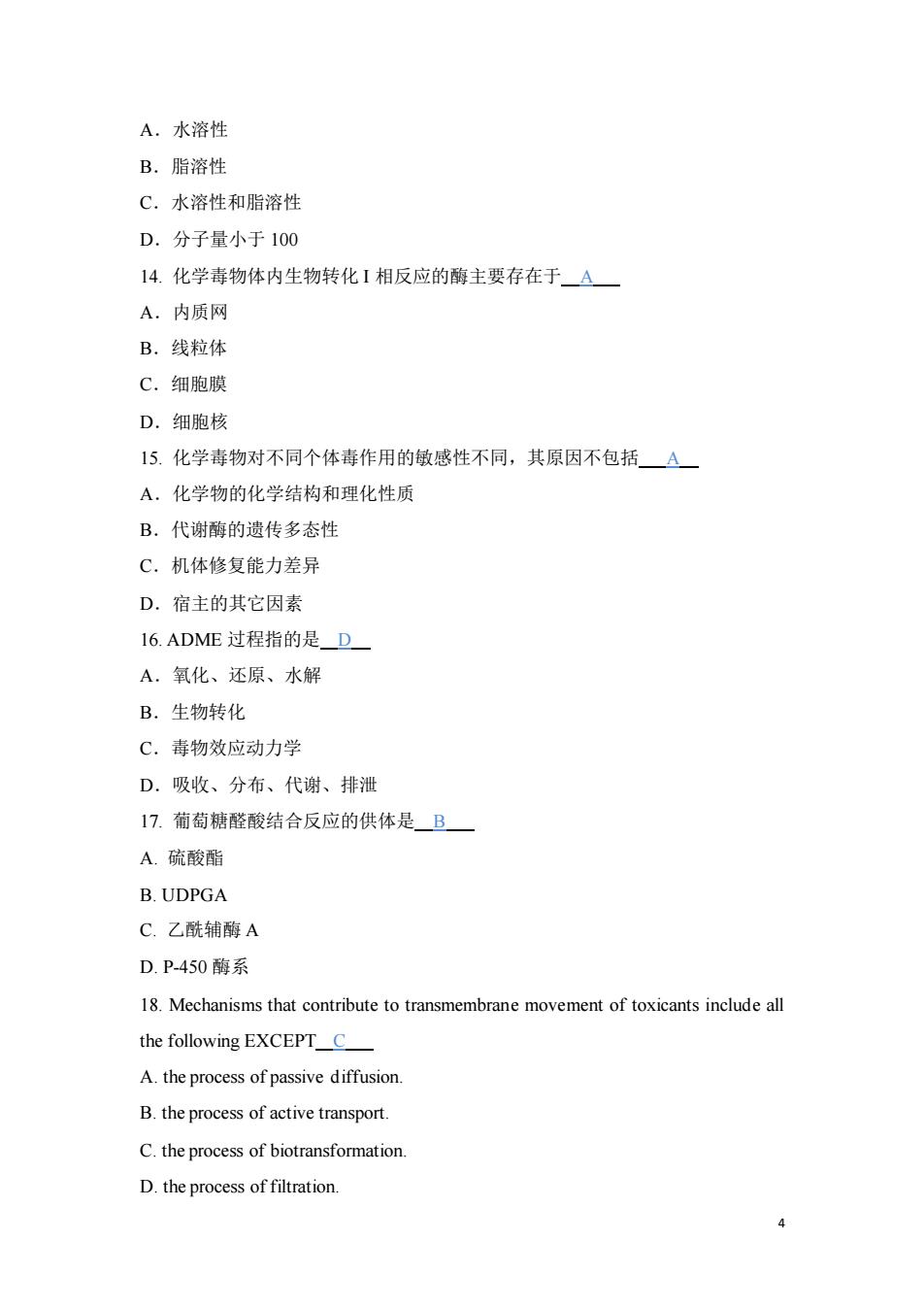正在加载图片...

A.水溶性 B.脂溶性 C.水溶性和脂溶性 D.分子量小于100 14.化学毒物体内生物转化I相反应的酶主要存在于A A.内质网 B.线粒体 C.细胞膜 D.细胞核 15.化学毒物对不同个体毒作用的敏感性不同,其原因不包括A A.化学物的化学结构和理化性质 B.代谢酶的遗传多态性 C.机体修复能力差异 D.宿主的其它因素 16.ADME过程指的是_D A.氧化、还原、水解 B.生物转化 C.毒物效应动力学 D.吸收、分布、代谢、排泄 17.葡萄糖醛酸结合反应的供体是B A.硫酸酯 B.UDPGA C.乙酰辅酶A D.P-450酶系 18.Mechanisms that contribute to transmembrane movement of toxicants include all the following EXCEPT C A.the process of passive diffusion B.the process of active transport. C.the process of biotransformation D.the process of filtration.4 A.水溶性 B.脂溶性 C.水溶性和脂溶性 D.分子量小于 100 14. 化学毒物体内生物转化 I 相反应的酶主要存在于 A A.内质网 B.线粒体 C.细胞膜 D.细胞核 15. 化学毒物对不同个体毒作用的敏感性不同,其原因不包括 A A.化学物的化学结构和理化性质 B.代谢酶的遗传多态性 C.机体修复能力差异 D.宿主的其它因素 16. ADME 过程指的是 D A.氧化、还原、水解 B.生物转化 C.毒物效应动力学 D.吸收、分布、代谢、排泄 17. 葡萄糖醛酸结合反应的供体是 B A. 硫酸酯 B. UDPGA C. 乙酰辅酶 A D. P-450 酶系 18. Mechanisms that contribute to transmembrane movement of toxicants include all the following EXCEPT C A. the process of passive diffusion. B. the process of active transport. C. the process of biotransformation. D. the process of filtration